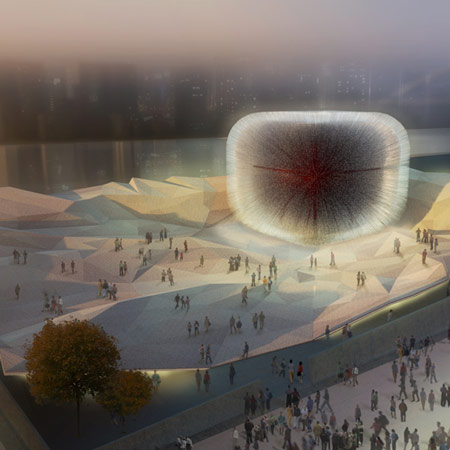
UK Pavilion at Shanghai Expo 2010 by Thomas Heatherwick
Shanghai Expo 2010: British designer Thomas Heatherwick has released images of his updated design for the UK pavilion at the Shanghai Expo 2010.
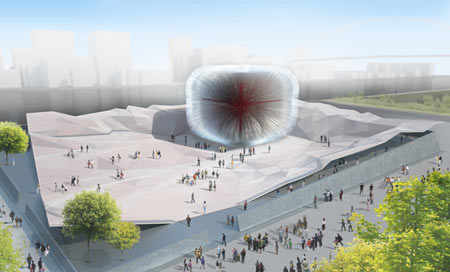
The six-storey pavilion is pierced by 60,000 transparent rods.
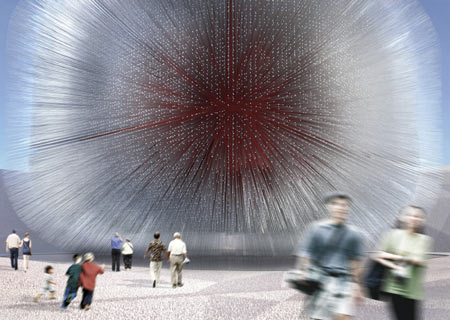
The 7.5 metre rods will act as fibre optic filaments during the day, illuminating the interior of the pavilion with natural light. At night the rods transport the light from the inside to the exterior, allowing the structure to glow.
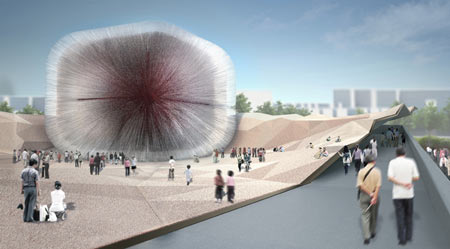
The surrounding faceted landscape provides space for public events and also offers shelter for visitors.
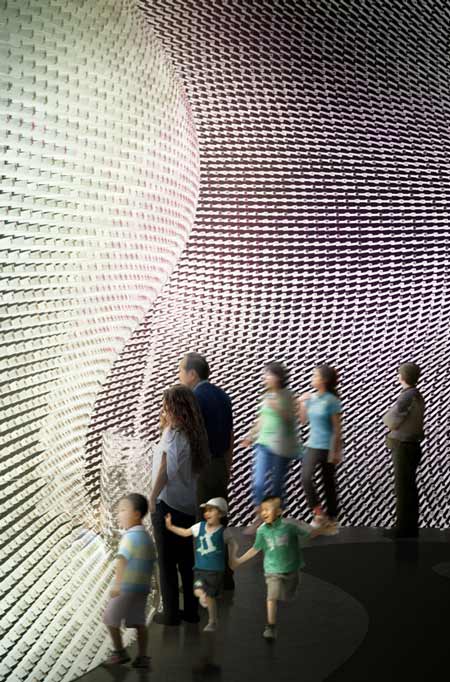
The pavilion will house the largest collection of wild plant seeds in the world - Kew’s Millennium Seed Bank partnership - displayed in the end of the transparent rods.
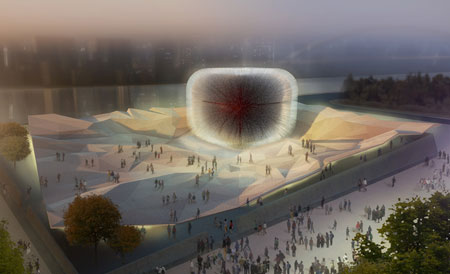
Construction began in March on China’s annual national tree planting day.
Heatherwick was awarded the commission in September 2007, beating architects including Zaha Hadid, John McAslan and Marks Barfield. See our previous story for more details.
For job opportunities at Heatherwick Studio, visit their company profile on Dezeen Jobs.
Here's further information from the Foreign and Commonwealth Office:
--
The Foreign and Commonwealth Office today reveals updated designs for the UK pavilion that will represent this country at Shanghai Expo 2010; its theme being ‘Better City, Better Life’. Developed by one of the UK’s leading creative talents – Thomas Heatherwick – the UK pavilion will provide a dramatic demonstration of creativity and innovation in the UK.
The centrepiece of the UK’s offering is the extraordinary pavilion building - a six storey high object formed from some 60,000 slender transparent rods, which will extend from the structure and quiver in the breeze. During the day, each of these 7.5m long rods will act like fibre optic filaments, drawing on daylight to illuminate the interior, thereby creating a contemplative awe-inspiring space. At night, light sources at the interior end of each rod will allow the whole structure to glow. The pavilion will sit on a landscape looking like paper that once wrapped the building and that now lies unfolded on the site. The landscape provides an open space for public events and shelter for visitors making their way into the pavilion structure.
Inside the pavilion building is a unique visual representation of the UK’s leading role in conservation worldwide – Kew’s Millennium Seed Bank partnership - the largest collection of wild plant seeds in the world. By encasing tens of thousands of seeds into the ends of the transparent rods, visitors will be able to view examples of seeds of plant species that contribute to national and global conservation programmes. The seeds have been sourced from the Germplasm Bank of Wild Species, Kunming Institute of Botany, The Chinese Academy of Sciences in China - a partner in the Royal Botanic Gardens, Kew’s Millennium Seed Bank Project. The seeds being used are taken from stocks that are both plentiful and readily available. They will create a stunning image of an alternative World Bank, into which is embedded the potential of life.
Visitors will access the ‘Seed Cathedral’ by a series of walkways, the content of which will depict the role of nature in UK cities in the past, present and in the future.
This design is already coming to life. Construction was formally started in March on China’s annual national tree planting day; the UK being one of the first self-build countries to start work on site.
Heatherwick Studio is acting in partnership with Mace, the consultancy and construction company, to build the structure.
Thomas Heatherwick, articulating his vision for the pavilion, said:
“The Expo in Shanghai will be an amazing event; around two hundred countries competing for the attention of seventy million visitors. Our task is to make the UK pavilion stand out. We decided to do this by making one extraordinary object; not recognisable in conventional terms, set in a calm open site. Each visitor will be able to explore both in their own way. Rather than making a straightforward advert for the UK, we want our pavilion to give each person a more profound understanding of the richness of contemporary UK culture.”